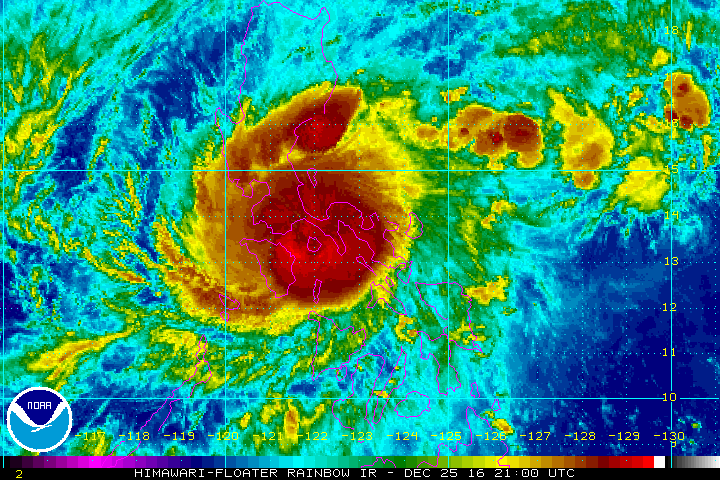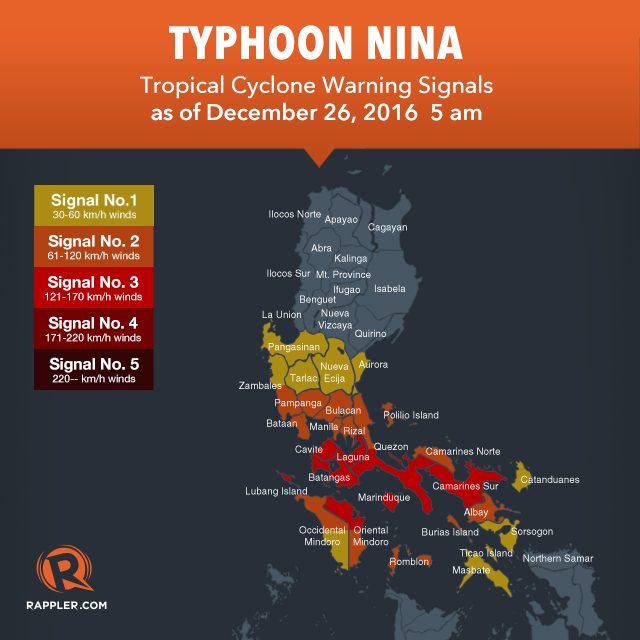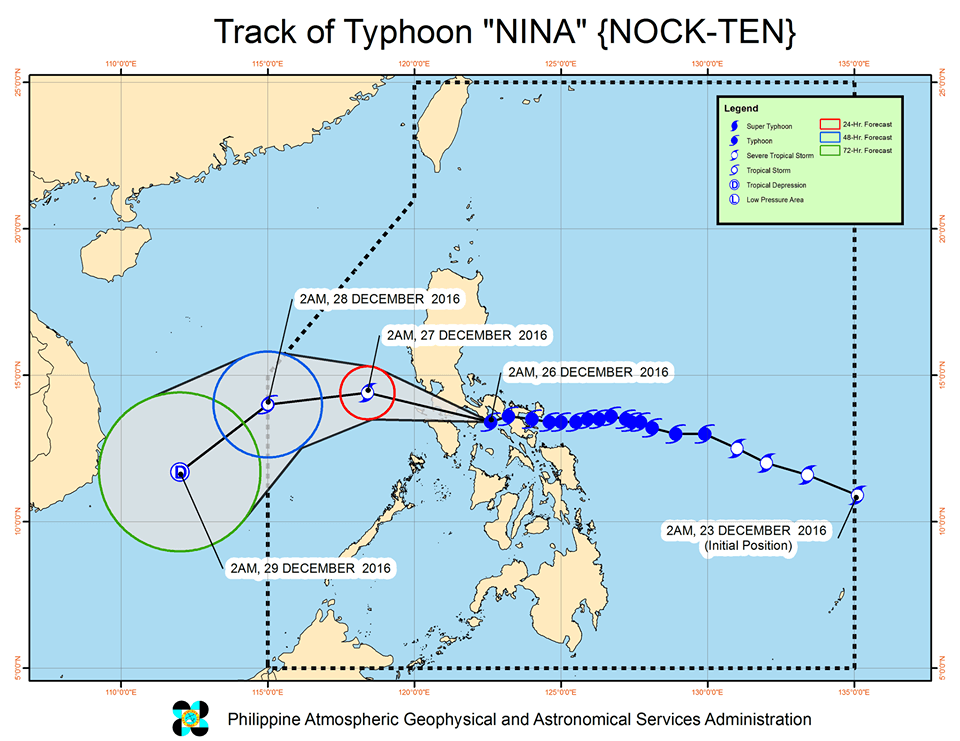SUMMARY
This is AI generated summarization, which may have errors. For context, always refer to the full article.

What’s the weather like in your area? Report the situation through Rappler’s Agos or tweet us at @rapplerdotcom.
MANILA, Philippines – There are no more areas under signal number 4 as Typhoon Nina (Nock-ten) slightly weakened before dawn on Monday, December 26, on its way to Calabarzon.
In a bulletin issued 5 am on Monday, state weather bureau PAGASA said Nina is already 85 kilometers north of Romblon, Romblon, crossing marine channel Mompog Pass. It continues to move west at 20 kilometers per hour (km/h).
The typhoon now has maximum winds of up to 150 km/h (from 175 km/h) and gustiness of up to 250 km/h (from 290 km/h) – weaker but still strong.
Nina had made its 1st landfall in Bato, Catanduanes at 6:30 pm on Sunday, December 25, then its 2nd landfall in Sagñay, Camarines Sur around 9:30 pm. It brought heavy rain and fierce winds to Bicol, with Catanduanes Governor Joseph Cua saying that his entire province lost electricity after Nina made landfall.
Below is the full list of areas under warning signals.
Signal number 3:
- Camarines Sur
- southern Quezon
- Marinduque
- Batangas
- northern Oriental Mindoro
- Lubang Island
- Cavite
- Laguna
Signal number 2:
- Metro Manila
- Rizal
- northern Quezon including Polillo Island
- Bulacan
- Bataan
- Pampanga
- southern Zambales
- rest of Oriental Mindoro
- Romblon
- northern Occidental Mindoro
- Burias Island
- Camarines Norte
- Albay
Signal number 1:
- rest of Occidental Mindoro
- Masbate including Ticao Island
- rest of Zambales
- Tarlac
- Nueva Ecija
- southern Aurora
- Pangasinan
- Sorsogon
- Catanduanes

Moderate to heavy rain is being experienced within Nina’s 400-km diameter, which could bring floods and landslides. Strong winds may damage medium- to high-risk structures, uproot trees, and destroy crops, added PAGASA.
After crossing Catanduanes, Camarines Sur, and Camarines Norte, Nina is now heading for southern Quezon, Batangas, and Cavite.
PAGASA warned that storm surges up to 2.5 meters high are possible in coastal areas in Camarines Sur and southern Quezon. Sea travel is generally risky in the seaboards of Luzon.
The state weather bureau also previously warned that Metro Manila would experience heavy rain and strong winds by Monday.
Nina is expected to leave the Philippine Area of Responsibility (PAR) on Wednesday, December 28.

– Rappler.com
Add a comment
How does this make you feel?
There are no comments yet. Add your comment to start the conversation.